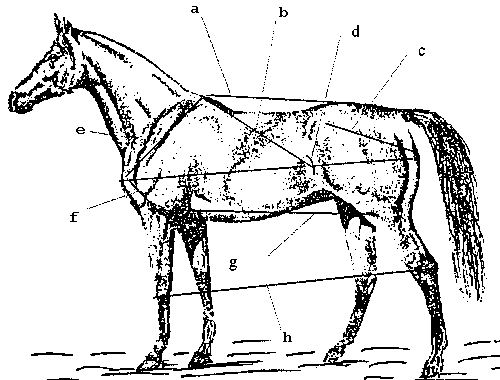A: Inspection schedules are listed on the website by April 15th each year. Members are notified of the schedule through the May/June issue of The Trakehner Times newsletter and on the website. Directions are available by contacting the local host. Contact information is provided along with the schedule.
A: Fill out the free online inspection nomination form by March 30 of the year you want your horse inspected. Watch the schedule listed on the website and prior to the deadline for the inspection you wish to attend – fill out the online inspection application form, pay all applicable fees, and send your horse’s registration papers to the ATA office.,
A: We inspect non-Trakehner horses if there is enough time at a particular inspection site. We inspect them for voluntary marks only, since they are not eligible for breeding approval with our association. Breeding approval is based on bloodlines and outside blood other than Thoroughbred, Arabian, and Shagya.
A: Yes for stallion candidates: All stallions requesting inspection must have an advance, passing veterinary inspection and X-rays produced no more than 75 days prior to the inspection, at owner’s expense, and submitted (including the X-ray films) to the ATA office at least 30 days prior to the inspection. The rationale for this is that a number of DOD problems (Developmental Orthopedic Disease) and certain other traits are relatively highly heritable. This is intended to help preserve soundness in the breed and improve the chances that offspring can better pass pre-purchase examinations. At present, this program is part of the inspection process of the German Trakehner Verband and most warmblood organizations.
A: Stand to be measured (height, girth, and canon bone)
A: The handler should wear comfortable clothing such as “Dockers” type khaki pants and a polo shirt or turtleneck sweater. Running shoes are a must. The handler must be able to keep up with the horse’s trot.
A: The judge(s) must judge what he/she sees on the day of inspection. If you horse has a temporary lameness you may wish to withdraw from the inspection. If you provide the ATA office with a veterinary certificate your inspection fee will be forwarded to an inspection at a later date. If we do not receive a veterinary excuse, you will be required to pay again the next time you apply.
A: Pre-nomination is done between birth and the colt’s first birthday. The completed registration application with registration fee must accompany the nomination fee and be received in the ATA office before the colt turns one year old. The pre-nomination is noted on the back of the colt’s registration certificate and entitles the owner to a discount when the colt is presented for inspection.
A: Nominate your horses and encourage other stallion or mare owners in your area to nominate their horses. Be sure someone in the region completes the host site application volunteering his/her facility for use as an inspection site.
A: Halters generally do not fit well enough to provide the necessary control to present a horse for breeding approval. They tend to slide around, sometimes even to the point of obstructing the horse’s vision. Bridles provide better fit and more stopping power. The better fit is usually a more flattering look for the horse.
A: Yes, one assistant with an ordinary dressage or lunge whip is acceptable. Do not add plastic bags or other items to the whips.
A: Please refer to the in-hand articles on this website or purchase an in-hand video learning tape. For members only – we also offer Inspection Tips
A: There are usually handlers, braiders, and other assistants available at most inspection sites, but it is best to contact the local host to inquire and obtain contact information.
A: Branding must be arranged prior to the inspection. Please see FAQ’s on Branding.
A: See Thoroughbred/Arabian Mare & Stallion Inspection FAQ’s.
A: Yes, if the inspector has enough time after the stallions and mares.
A: It is not possible to inspect horses via videotape as it does not give a true impression of the animal’s conformation, movement, or temperament.

a – the back (withers to peak of croup)
b – the body (point of shoulder to point of buttock)
c – the pelvis (point of hip to point of buttock)
d – the rib length (withers to last rib)
e – the shoulder (withers to point of shoulder)
f – the arm (point of shoulder to point of elbow)
g – the elbow to the stifle
h – the knee to the hock